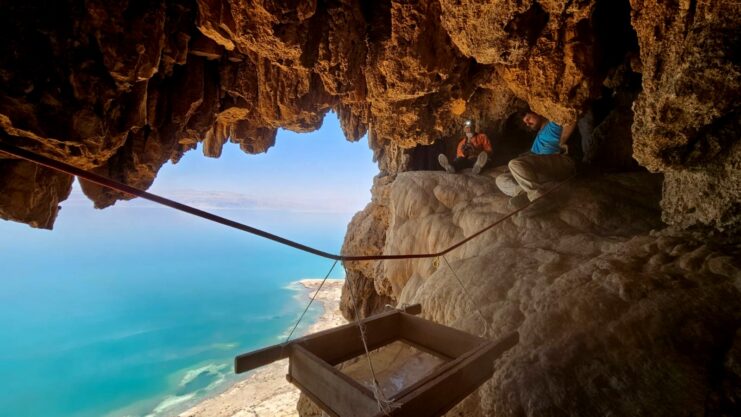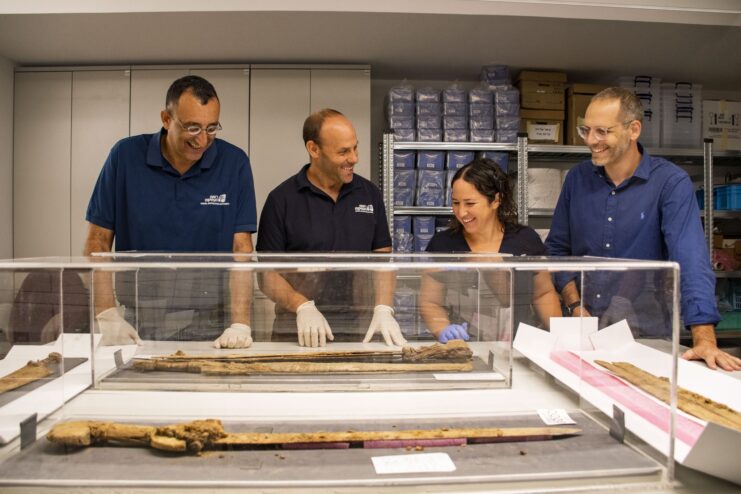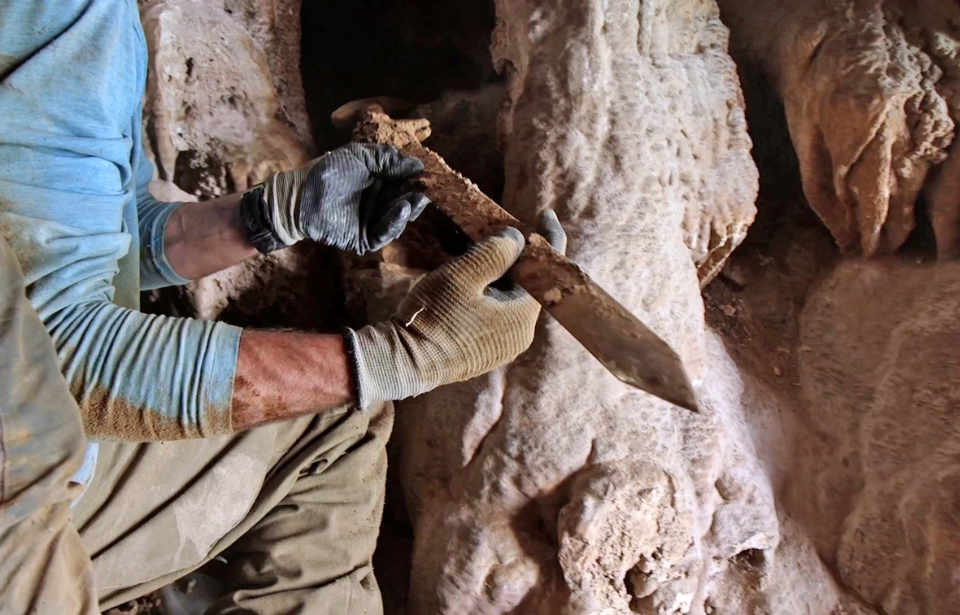A team of researchers and archaeologists are celebrating the discovery of four “excellently preserved” Roman-era swords and a shafted weapon within a cave in the ‘En Gedi Nature Reserve, in the Judean Desert. The cache, believed to have been hidden by Judean rebels, was an unexpected find and is believed to have been taken from the Roman Army.

The items weren’t even the reason for the team’s journey to the area. They were looking to photograph a stalactite with a First Temple period (970-586 BC) Paleo-Hebrew inscription that had been discovered 50 years prior.
While in the upper level of the cave, Dr. Asaf Gayer of the Department of the Land of Israel Studies and Archaeology at Ariel University came across an “extremely well-preserved” Roman pilum in a narrow crevice. Further examination uncovered the wooden scabbards belonging to the swords.
After reporting the find to the Israel Antiquities Authority, the Judean Desert Cave Survey, along with Gayer and Boaz Langford, returned to the cave and conducted a proper excavation. It was during this dig that they made the discovery of the four Roman swords, three of which still had their iron blades within their wooden scabbards. They’re believed to date back some 1,900 years.
Other items, including leather straps, were also uncovered.
In a post on Facebook, the team shared their elation over the Roman-era discovery, writing, “Finding a single sword is rare – so four? It’s a dream! We rubbed our eyes to believe it.”
Based on their size (60-65 cm), three have been identified as spatha swords, while the fourth, at 45 cm in length, is believed to be a ring-pommel sword. Further laboratory examination confirmed they belonged to soldiers stationed in Judea during the Roman period.
Speaking with the media, Guy Stiebel, an archaeologist at Tel Aviv University, explained that, despite the discovery occurring on the far-eastern corner of the Roman Empire, the swords were likely crafted in Europe, before being brought to Judea.

She continued, “We are just beginning the research on the cave and the weapon cache discovered in it, aiming to try to find out who owned the swords, and where, when, and by whom they were manufactured. We will try to pinpoint the historical event that led to the caching of these weapons in the cave and determine whether it was the time of the Bar Kokhba Revolt in 132-135 CE.”
The Bar Kokhba Revolt was a Jewish rebellion, led by Simon bar Kokhba, against the Roman Empire. It was prompted by several high-tension events, including an increased military presence, economic and administrative changes, and the establishment of a new city. It ended in a Roman victory, despite the empire suffering heavy losses in the fighting that occurred.

The swords’ discovery led to a further excavation of the cave, which itself led to additional discoveries. These include a bar-Kokhba bronze coin, as well as artifacts dating back to the Chalcolithic (5,500-3,000 BC) and Roman periods.
More from us: Historical Artifacts Found At Bottom of 194-Year-Old Time Capsule Unearthed At West Point
An article discussing the discovery of the swords is currently featured in New Studies in the Archaeology of the Judean Desert: Collected Papers.
